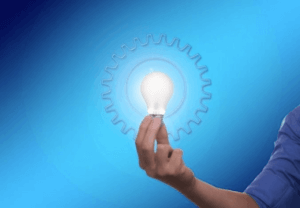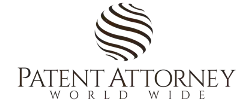What is Patent? what can be patented in Europe ?
A patent is a government-granted right that gives exclusive ownership of an invention for a limited time. It allows the patentee to control who can use, make, sell, or import the invention. Obtaining a patent offers various financial advantages, such as earning royalties through licensing, building a business without competition, raising capital, or selling the patent.
Table of Contents
- What is Patent? what can be patented in Europe ?
- Definition: what is a patent?
- Where you wish to protect your invention
- What can be patented in Europe
- Inventions not patentable in Europe as per EPC
- Novelty : Newness requirement
- Inventive step : Non-obviousness
- Few approaches to achieving the Inventive step
- Industrial application or utility
- What extent of information is required to file a patent in Europe?
to understand what can be patented in Europe, we will start with how patent law defines a patent.
Definition: what is a patent?
“A Patent is a statutory right for an invention granted for a limited period of time to the patentee by the government, in exchange of full disclosure of his invention for excluding others, from making, using, selling, importing the patented product or process for producing that product for those purposes without his consent.”
in other words; “A patent can be defined as a grant of exclusive rights to an inventor over his invention for a limited period of time (generally 20 years from the date of filing of patent application). The exclusive rights are the right to exclude others from making, using, selling, importing, or offering for sale his patented invention without his permission.”
This implies, when you get a patent for your invention, the government gives you a monopolistic right for your invention to stop others from making, using, selling, importing, or offering for sale your patented invention without your permission. What this means in financial terms is you would get significant monetary benefits for your patented invention by:
- licensing your patented invention to other businesses and earn royalties on regular basis as per the agreement
- you can build a business around your patented invention and stop others from copying it, so there would be no one competing with you with similar product or service, and hence can earn significant profits.
- having a patent for your invention may also help in raising capital for business
you can transfer all rights of the patented invention to other businesses. that is, you can make significant money by selling your patented invention.
A European patent is a single patent application that simultaneously covers many European states during the examination process. After grant of the patent, it splits up into separate national patents in the states you choose. The European Patent Office (“EPO”) administers and grants European patents in accordance with the European Patent Convention (“EPC”)
Currently there are 39 member states that are part of EPO the list of countries is on this link
Where you wish to protect your invention
- If you need protection in only one European country, you can register a patent at national level.
- If you need protection for entire Europe? you can register a European patent with the European Patent Office. which is then validated by the national patent office of each country where protection is required.
- If you wish to have protection at international level, you may choose convention or PCT route for international patent filing
What can be patented in Europe

Lets first see the definition of what can be patented in Europe and what can not be patented in europe as per law;
European patents are granted for inventions that are new, involve an inventive step and are susceptible of industrial application. An invention can belong to any field of technology.
European patents shall be granted for any inventions, in all fields of technology, provided that they are new, involve an inventive step and are susceptible of industrial application. However, there are some subject matter that are not pantable in europe that are mentioned in section below.
Inventions not patentable in Europe as per EPC
what can not be patented in Europe ? What Inventions are not patentable subject matter?
There are subject matters which are non-patentable, the following in particular shall not be regarded as inventions:
- discoveries, scientific theories and mathematical methods;
- aesthetic creations;
- schemes, rules and methods for performing mental acts, playing games or doing business, and programs for computers;
- presentations of information.
- computer programs are not regarded as inventions if claimed as such. However, a computer program is not excluded from patentability under Article 52 if, when running on a computer, it causes a further technical effect going beyond the “normal” physical interaction between the program (software) and the computer (hardware).
- methods for treatment of the human or animal body by surgery or therapy, and diagnostic methods practised on the human or animal body
- plant and animal varieties and essentially biological processes for the production of plants or animals and the plants or animals exclusively obtained by such processes
Patentability requirements of an invention:
- The invention should be a patentable subject matter, which is new, involve an inventive step and is susceptible of industrial application
- The invention must be new, or “novel.”
- The invention should involve “inventive step.”
- The invention must have “industrial application”
Now let’s look at each patentability criteria one by one so that we can see if our invention satisfies them and whether we should proceed with filing a patent application.
Novelty : Newness requirement
An invention is said to be novel if it is not known to the public or does not constitute the state of the art. The state of the art comprises everything made available to the public anywhere in the world by means of a written or oral description, by use, or in any other way, before the date of filing or priority.
An invention is said to be novel if all elements of a claim of the invention are not anticipated by a single prior art that is published, or used or known to the public.
Novelty is distroyed only by something which is clearly disclosed to a skilled person in a single source of prior art (that is in a single document). The invention should not be in publication or being used or known to the public or patented in Europe or other countries prior to the filing date.
Inventive step : Non-obviousness
An invention is held to involve an inventive step if it is not obvious to the skilled person in the light of the state of the art . In assessing inventive step as opposed to novelty, multiple sources of prior art may be applied.
A person skilled in the art is a person who has average skills from your domain. For example, if your invention is related to a mechanical device, the person skilled in the art would be from a mechanical background. If there are multiple technologies used in the invention then a person skilled in the art is assumed to have all the knowledge (that is available and known to the public) from the technologies involved. This is to assess the inventiveness of the invention.
The idea here is our invention should not be obvious to a person skilled in the art (that is an average person from a background of the field of the invention).
In other words, considering the state of the art (things are already known to the public) and assuming the person skilled in the art does not have any knowledge about our invention, if that person skilled in the art was asked to solve the problem (that our invention solves), then our invention should not come as a natural suggestion by that person skilled in the art. Which ultimately means invention should not be obvious. This is in essence known as the non-obviousness test.
Few approaches to achieving the Inventive step
few approaches to achieve the Inventive step are:
- Inventions is solving a long-standing technical problem which is tried to be solved by prior arts but could not.
- If invention is showing unexpected technical effect of a new combination of known elements
- The degree of difficulty to a person to combine known prior arts to arrive at a solution, etc..
- The “problem/solution” approach is usually used for evaluating inventive step, wherein the solution presented by the patent application is checked if it is obvious to a person skilled in the art.
if we review the invention in light of existing knowledge or state of the art, does the invention becomes an obvious next step? If the answer is yes… then the invention is said to be obvious to a person skilled in the art and a patent would not be granted such invention. Some of the common things considered as obvious are:
This is the most tricky and difficult-to-overcome the requirement for getting a patent in Europe.
An experienced Patent practitioner would be asking you for the required details and technicality of your invention and using such information to estalish invetive step and novelty while drafting a patent application for your invention which gives a significant chance for your patent application go through examination stage till the grant of patent.
Industrial application or utility
Industrial application means invention is capable of being made or used in any kind of industry. This is also known as usefulness, a patented invention should be able to be produced on a large scale that is it could be created, used and repeated. In general, this patentability requirement of industrial application is not much of a problem to prove.
What extent of information is required to file a patent in Europe?
When you think about invention (innovative ideas) and its patentability, the first question you need to ask yourself about your idea is how much details you know about that idea and are these details are enough to reduce it into practice?
“innovative ideas (inventions) are patentable only if they are enabling ” provided that it satisfies all patentability criteria. Your idea would be said to be ‘enabling’ if the information you have is detailed enough such that a person skilled in the art would be able to practice the invention without requiring external help or additional research.
In other words, the information you know about your idea is detailed enough such that a person moderately skilled in the art could practice the invention. You don’t need to develop a working model or a prototype of your invention (idea) but you need to know how to implement or practice your invention. such information called “implementable details of invention” or an enabling disclosure of the invention.
“Everything has its beginning in an idea”
When all you have is one line idea about something that might work or would work then you should know there is work to be done and efforts to be taken before it could get patent granted. That doesn’t mean you need to build your invention or a working prototype, all it means is you need enough details about your idea that would help someone to practice it, it should be enabling !!!
Everything begins with an idea, including inventions that are granted patents now, started as an idea at a certain point. but a 1 line idea may not be yet patentable, it needs further work so that it becomes invention disclosure (implementable information of the invention) such that a person skilled in the art could reduce it to practice.
You may read our guideline on How to take your innovative idea from idea stage to invention disclosure to granted patent in Europe which would help you proceed in step by step manner from idea inception stage to granted patent.
